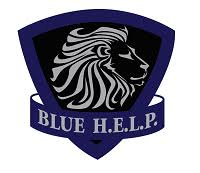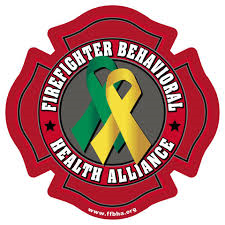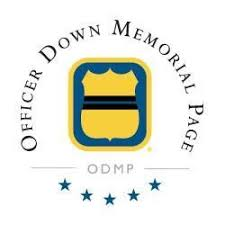Traits of the Effective Leader (pt. 1)

Photo Credit: Wikipedia
Leadership is essential to any task. When people gather around a shared objective, it requires some degree of action, and proper leadership attains the required intention. Leaders must be fully invested in their team; if they are not, the team will fail. Many great leaders are graduates from one of the Military Academies, the United States Military Academy at West Point or the United States Naval Academy.
The mission of The United States Military Academy at West Point is “to educate, train, and inspire the Corps of Cadets so that each graduate is a commissioned leader of character committed to the values of Duty, Honor, Country and prepared for a career of professional excellence and service to the Nation as an officer in the United States Army.”[1]
The mission of the United States Naval Academy is “to develop Midshipmen morally, mentally, and physically and imbue them with the highest ideals of duty, honor, and loyalty in order to graduate leaders who are dedicated to a career of Naval service and have potential for future development in mind and character to assume the highest responsibilities of command, citizenship, and government.”[2]
But select capable men from all the people – men who fear God, trustworthy men who hate dishonest gain – and appoint them as officials over thousands, hundreds, fifties and tens.
Exodus 18:21 NIV
On November 14, 1965, under the command of Lieutenant Colonel Harold “Hal” G. Moore, 450 soldiers from the 1st Battalion, 7th Cavalry (Airmobile) were airlifted into the la Drang Valley in the central highlands of Vietnam. They were immediately attacked by nearly 3,000 North Vietnamese soldiers, marking the first major battle between the United States Army and the People’s Army of North Vietnam and one of the Vietnam War’s bloodiest battles. Three days later, after constant battle, Lt. Col. Moore was the last U.S. Soldier to leave the battlefield.
While at Fort Benning, Georgia, before their deployment, Col. Moore told his “troopers:”
“I can’t promise you that I will bring you all home alive. But this I swear, before you and before Almighty God, that when we go into battle, I will be the first to set foot on the field, and I will be the last to step off, and I will leave no one behind. Dead or alive, we will all come home together. So help me, God.”[3]
Hal Moore learned how to lead; he possessed rare qualities of a true leader rarely found today. Retiring as a Lieutenant General, Hal Moore believed that there are two things a leader can do:
- Contaminate his environment and his unit with his attitude and actions
OR
- He can inspire confidence
Hal Moore spent most of his life as a leader. While developed in the Army, Hal’s leadership style applies to business, government, sports, home, family – anywhere.
Lieutenant General Moore’s four basic principles to leadership are:
Three Strikes, and you are not out. Always strive to move forward, stay positive, maintain command presence.
There’s always one more thing you can do to influence any situation in your favor. And after that, there’s one more thing. Get the job done and do it well, be proactive – not reactive; always exercise good judgment. A good leader will define the task, build a plan and communicate it, making sure it is understood. Know your challenges and always ask the “what ifs.”
“When nothing is wrong, there’s nothing wrong – EXCEPT there’s nothing wrong. That’s when a leader has to be most alert.” Do not be complacent; complacency kills and destroys. The Japanese attack of Pearl Harbor on December 7, 1941, is an excellent example of being too complacent.
“Trust Your Instincts.” That “gut feeling” is the product of a personally structured leader, education, personality, and experience. As first responders, we have to make decisions quickly and correctly; your instincts will tell you what is right or what is wrong.
(Hal Moore on Leadership, Winning When Outgunned and Outmanned, Harold G. Moore and Mike Guardia, Magnum Books, Maple Grove, Minnesota, 2017, 168 pages)
Hal Moore believed in structure as a cornerstone in building leadership. He identified three areas of significance that build’s the foundation of structure for a successful leader.
Always continue to learn, stay educated, and up to date on current affairs. Before the Battle of la Drang, Hal studied the French army’s failures after being defeated in the same valley; he read about Custer’s last stand as his Battalion had the same unit designation as Custer. He studied the capabilities of the UH-1 Iroquois (Huey) helicopter learning its capabilities and limitations, and he studied all he could about the newly issued and untested M-16 rifle.
Maintain good physical condition. Stay in shape so you can perform when needed. Hal Moore was an avid runner who took time every day to put in some miles. He used running as his meditation.
Stay spiritually centered. Having a strong relationship with God will give a reference of strength when going through times. Hal Moore was a devout Catholic. Before and after his time at West Point, he would spend time at “Abbey’s” for reflection. He would attend Mass daily when conditions allowed, and he prayed daily for his men who were killed in action. He worshipped Jesus Christ as his Lord and Saviour.

photo courtesy of Hal Moore
Once the structure of one’s self is established, the structure of trust must be built. Gaining the trust of people in any situation is crucial to building an effective team. Leaders must trust their subordinates to perform as they were trained, and the leaders must have the trust of their people that the leader will perform his or her duties thoroughly. Finally, the people doing the tasks must have trust in each other.
A team or organization with a structured leader working in the climate of mutual trust can accomplish anything.
Don’t let anyone look down on you because you are young, but set an example for the believers in speech, in conduct, in love, in faith and in purity.
1 Timothy 4:12
Lieutenant General Moore spent a lifetime reading and encouraging strong, principled leadership ideas as a soldier and individual. Click here for an overview of Hal Moore’s 17 Leadership Precepts.
In life, we will work with and for more bad leaders than good ones. Toxic leadership can destroy an organization and bad leadership will tear down the person’s spirit doing the task.
Stay strong, stay focused, and continue to lead from the front. Put God First, Family Second, and the Job Third.
“The discipline that makes an effective leader begins in the home.”
“Fewer things will impact a team’s morale than a leader who does not recognize their accomplishments and hard work.”
“To be a leader, you must be willing to be a lifelong learner.”
“No job is ever “beneath” you.”
Harold G. Moore, Hal Moore on Leadership: Winning When Outgunned and Outmanned
IF YOU HAVE THOUGHTS OF SUICIDE GET HELP NOW
Law Enforcement Copline (800) 267-5463
Firefighters / Medics Fire/EMS HELPLINE (800) 731-FIRE (3473)
- United States Military Academy – West Point, accessed 02/13/2021, https://www.westpoint.edu/#:~:text=The%20U.S.%20Military%20Academy%20at%20West%20Point%27s%20mission%20is%20%22to,an%20officer%20in%20the%20United ↑
- United States Naval Academy – Annapolis, accessed 02/13/2021, https://www.usna.edu/PlebeSummer/index.php#:~:text=The%20mission%20of%20the%20United,in%20mind%20and%20character%20to ↑
- Lieutenant General Harold G. Moore(RET) & Joseph L. Galloway, We Were Soldiers Once… and Young: Ia Drang – The Battle that Changed the War in Vietnam, Random House Publishing Group, October 1992 ↑










